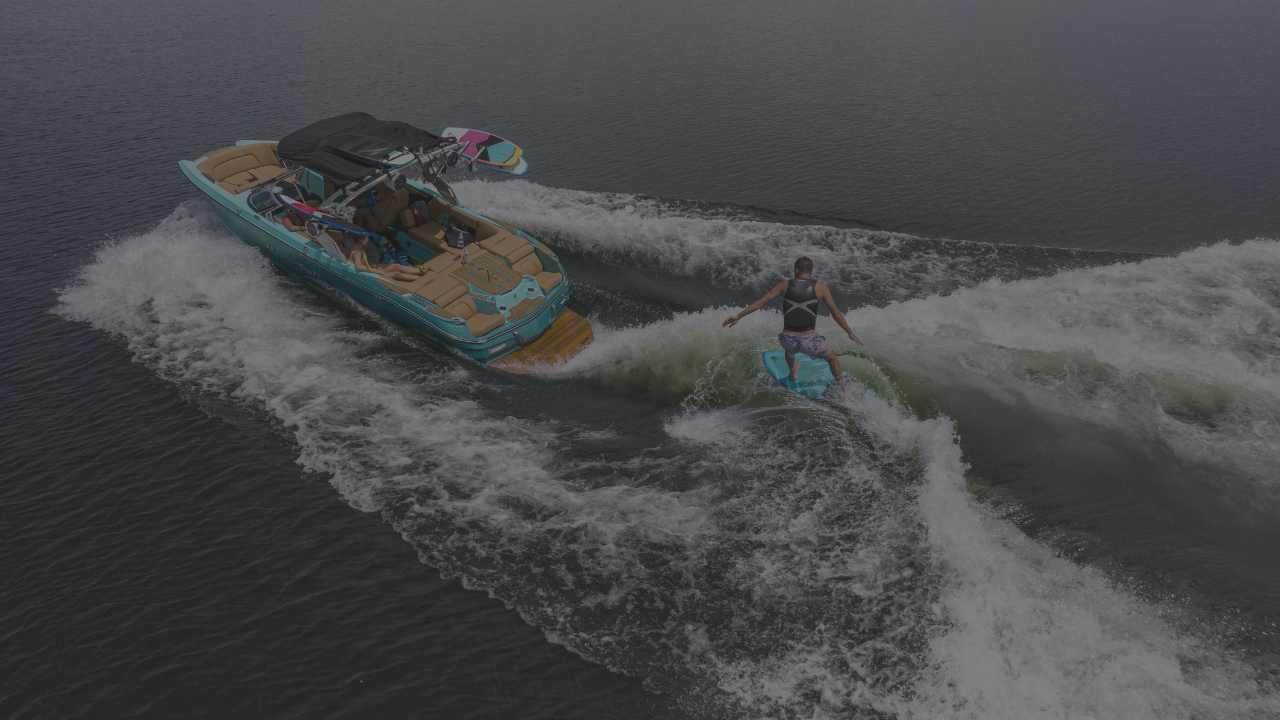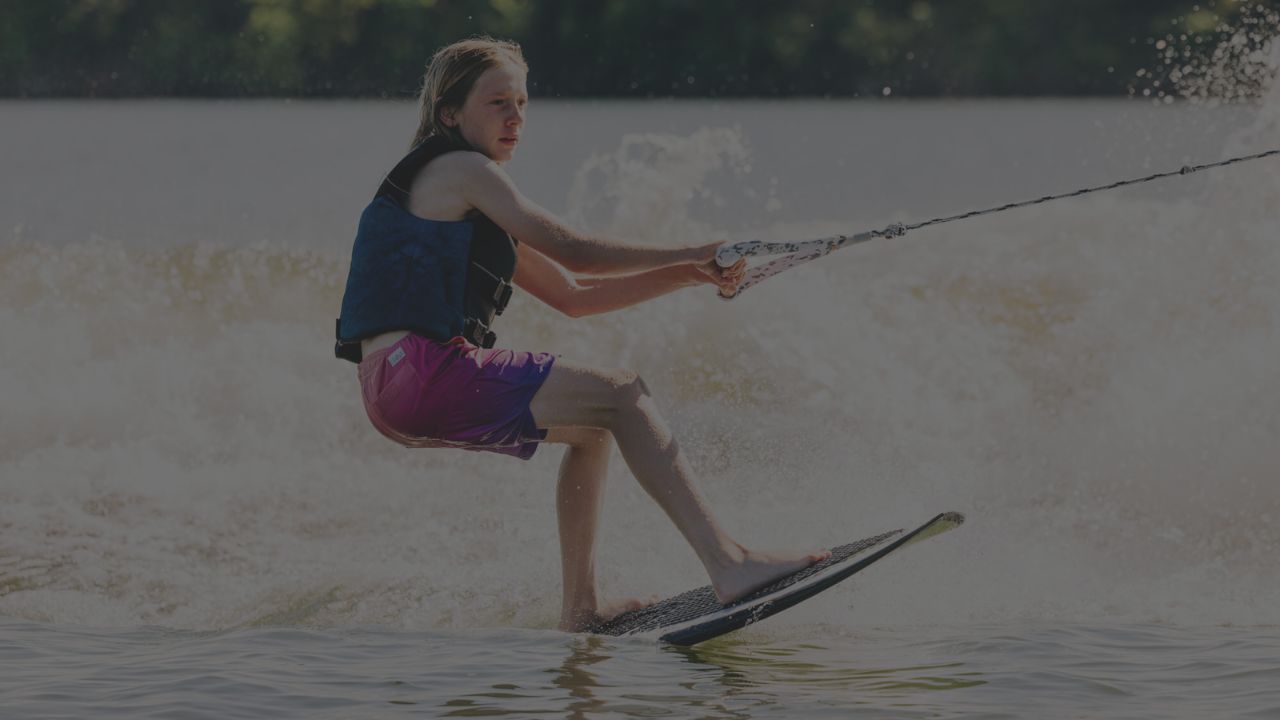WakeFoil and Surf Foil Buyer's Guide

What is Wakefoiling or Foil Surfing?
Foils have taken the boating industry by storm. The sensation of riding a foil 2-4 feet out of the water feels similar to the best powder day of your life on a snowboard or skis. It’s effortless, and the feeling can quickly make wakefoiling the best part of any day out on the lake.
In this article:
One of the best parts about foiling is that you can do it in just about any water condition and behind just about any boat. The foils are designed to rise above the water at a certain speed which makes it feel like you’re flying or floating above the water.

I can already hear the cynical person on your boat saying “Isn’t this an air chair?”
No, no, no. The biggest difference is that today’s modern wakefoil boards are lighter, safer, smaller, and much easier to use than your Uncle Eddy’s death stick. Today’s foils are extremely efficient, and beginner foils can start to lift at speeds as low as 4 MPH. The barrier to entry is low, and even the most novice watersports enthusiast can quickly get up and ride with the right foil board and foil set.
Now that you have a basic understanding of what a wake and surf foil is, let’s go over a few of the key points.
Wake and Surf Foiling Overview
Foil Surfing is a completely different sensation compared to wakeboarding or wakesurfing. It feels like flying, floating, or a deep powder day at the mountain.
Rise above the choppy water. A foil set provides that buttery smooth feeling all day long, no matter how rough the water is making it a great option for afternoon sessions when the water is too rough for wakesurfing or wakeboarding.
Today’s hydrofoils are extremely efficient, which means you can get up and foil at slower speeds.
Where do I ride my Wakefoil or Surf Foil? You can ride your hydrofoil behind any type of boat and even a jet ski. 
How Does a Wakefoil Work? Foil Design and Hydrodynamics 101
A foil is like an airplane wing that is submerged in the water. Think of the mast like a plane’s control stick. With different weight distribution and body position, you can control the pitch and roll of the foil, similar to a pilot steering a plane through the air.
Wake and Surf Foils are designed for lift at relatively low speeds, with a medium top-end speed. This is the ideal combination for riding behind the boat. It’s stable and forgiving for beginners, but more experienced riders won’t outgrow it.
Wake and Surf Foil’s relatively heavy construction is a good thing, as the added weight down low provides stability for the rider. Lighter carbon foils, on the other hand, are faster and higher performance, but are much more “twitchy” when maneuvering.
What are the main components of a Foil?
The Foil Wings - This is where the magic happens. The foil is the part of the setup that actually causes the lift and because of this, it’s the most important piece when considering buying a hydrofoil. The length of the foil wing, or wingspan, impacts overall foil performance, as well as the shape and material it is made from.
When choosing a front wing for your foil, consider what you want from your foiling experience in terms of stability and speed. Larger wings provide more stability, allowing you to recover easily from mistakes without affecting your ride or lift. They are ideal for beginners and riders seeking a more forgiving foiling experience. On the other hand, smaller wings offer greater agility for carving and pumping but are less forgiving for new riders. Additionally, the efficiency of the wing affects speed. You might see the efficiency called out like this:
High Aspect = high speed
Medium Aspect =medium speed
High Aspect Wings having lower drag, allowing for higher speeds. Smaller wings also contribute to speed due to their lower drag, while larger area wings are designed for slower rides, accommodating heavier riders, and are more manageable for beginners.
Like the front wing, the size your back wing impacts stability, agility and speed. Smaller back wings will create less drag, allowing riders to achieve faster turns and speeds, while a larger back wing will provide more stability in the wave.
The Foil Board - In other board sports, the board is usually the most important because it typically connects the rider to the surface (Water, Snow, Concrete). In the case of foiling, the boards shape, construction, and style are slightly less important because the foil wing is going to be doing a lot of the heavy lifting (pun intended).
You still want a board that’s going to perform how you want it to and this comes down to construction and size.
If you are brand new to the sport: We recommend using a compression molded or foam-coated board. Compression molded boards are heavier and they dampen more of the vibrations, which can be a good thing when you are first learning how to foil.
If you are looking to quickly progress and make foiling a big part of your time on the water, get something that’s fiberglass or carbon for a more performance-oriented construction. More advanced boards (carbon fiber and surf construction) weigh less and offer a more precise feel on the water.
Size: Just like wakesurfing, smaller boards generally require a higher level of skill to master but allow for quicker turns and easier maneuverability. Bigger boards provide a larger planing surface, are easier to control and provide a mellower ride for beginners. When you're first learning, it's common to touch down on the water frequently with the board. Opting for a larger board will make it easier to rebound and get back up on the foil quickly. On the other hand, smaller boards may not provide the same rebound effect but offer a more thrilling ride once you've gained confidence and can comfortably cruise above the water.
The Foil Mast - The mast is the connection between your board and the foil wings. In general, beginner masts are shorter, and are built to perform at slower speeds. Larger mast sizes are built for more advanced riders, higher speeds, or those looking to charge through bigger waves.
The larger the mast size, the better it will handle choppy water because it allows the rider to stay on the foil without touching the board to the water.
Most foil surfing masts are 24"-28” (60cm-72cm), though some brands have created masts a short as 14" and as long as 32" to really customize the foil to the needs of the rider.

Now that we’ve covered the basics of wake and surf foils it’s time to review the key points:
- You can foil behind any boat in any kind of water condition.
- Stick with a smaller mast and larger board when you are first learning to foil.
- Choose a board construction, wingspan, and mast size that fits your ability level.

Got Questions? We're Here to Help!
Got some foil questions that still need answered? Don't worry, our team of product experts are available. Give customer service a call or send us an email.




Post Comments
0 Item(s)